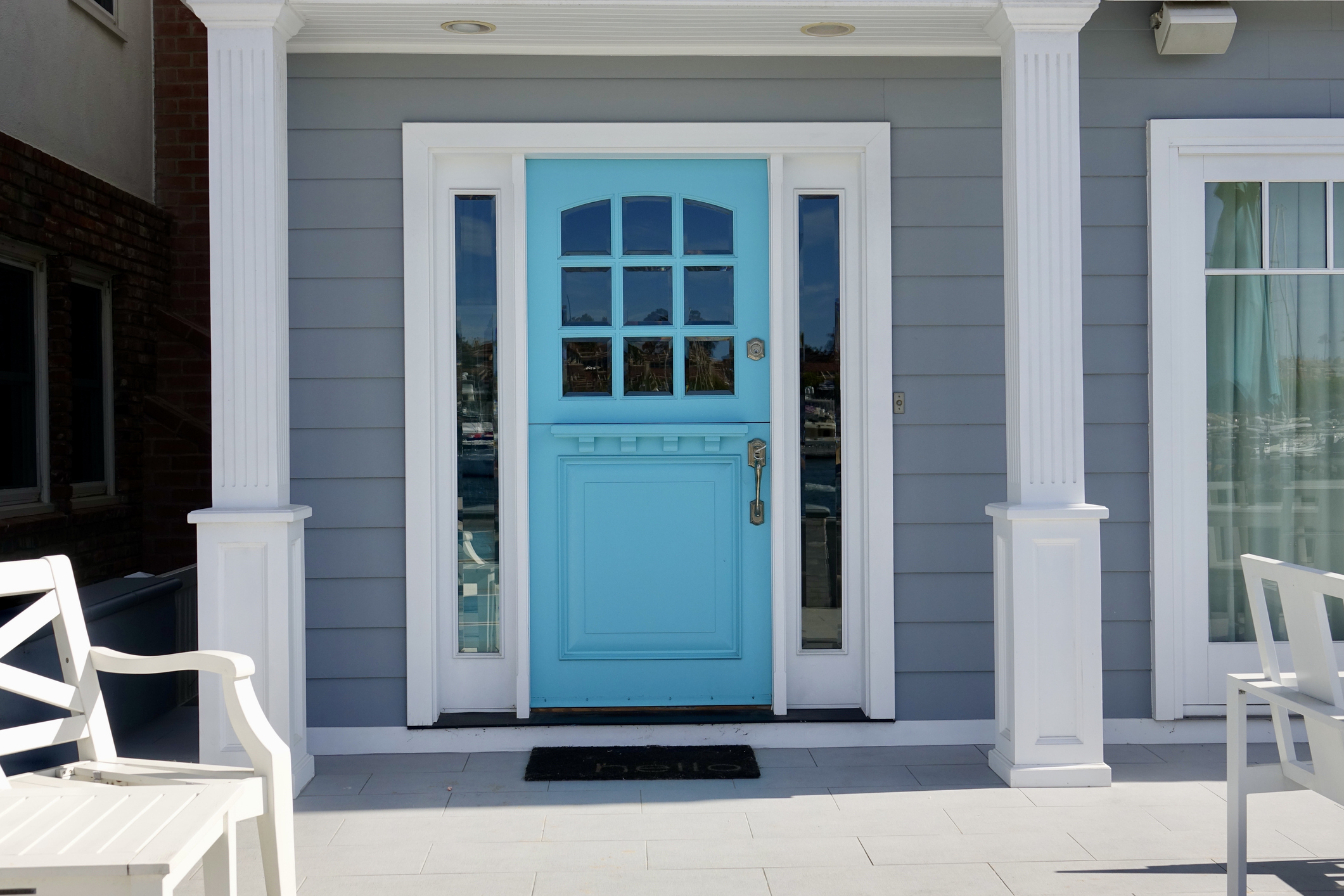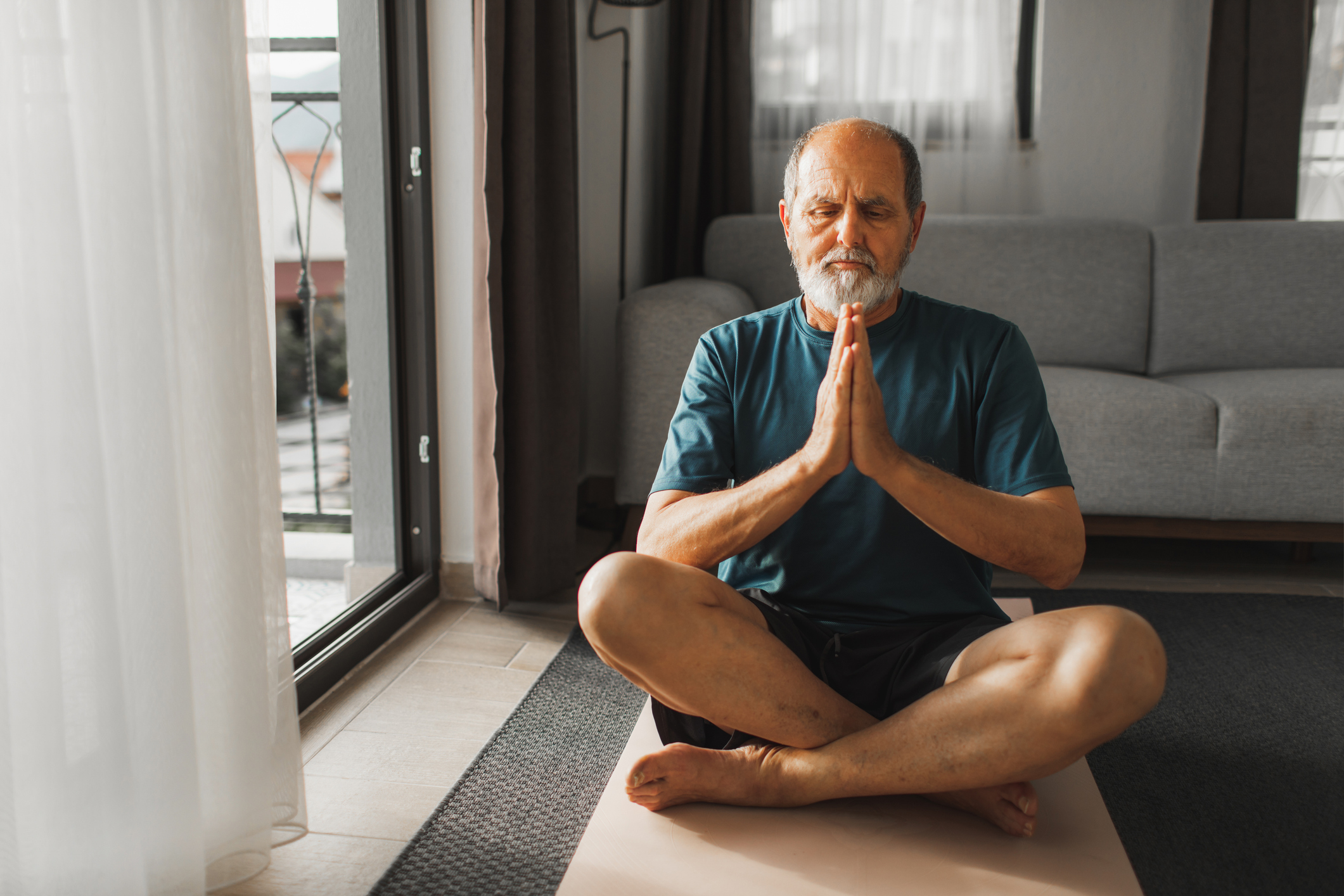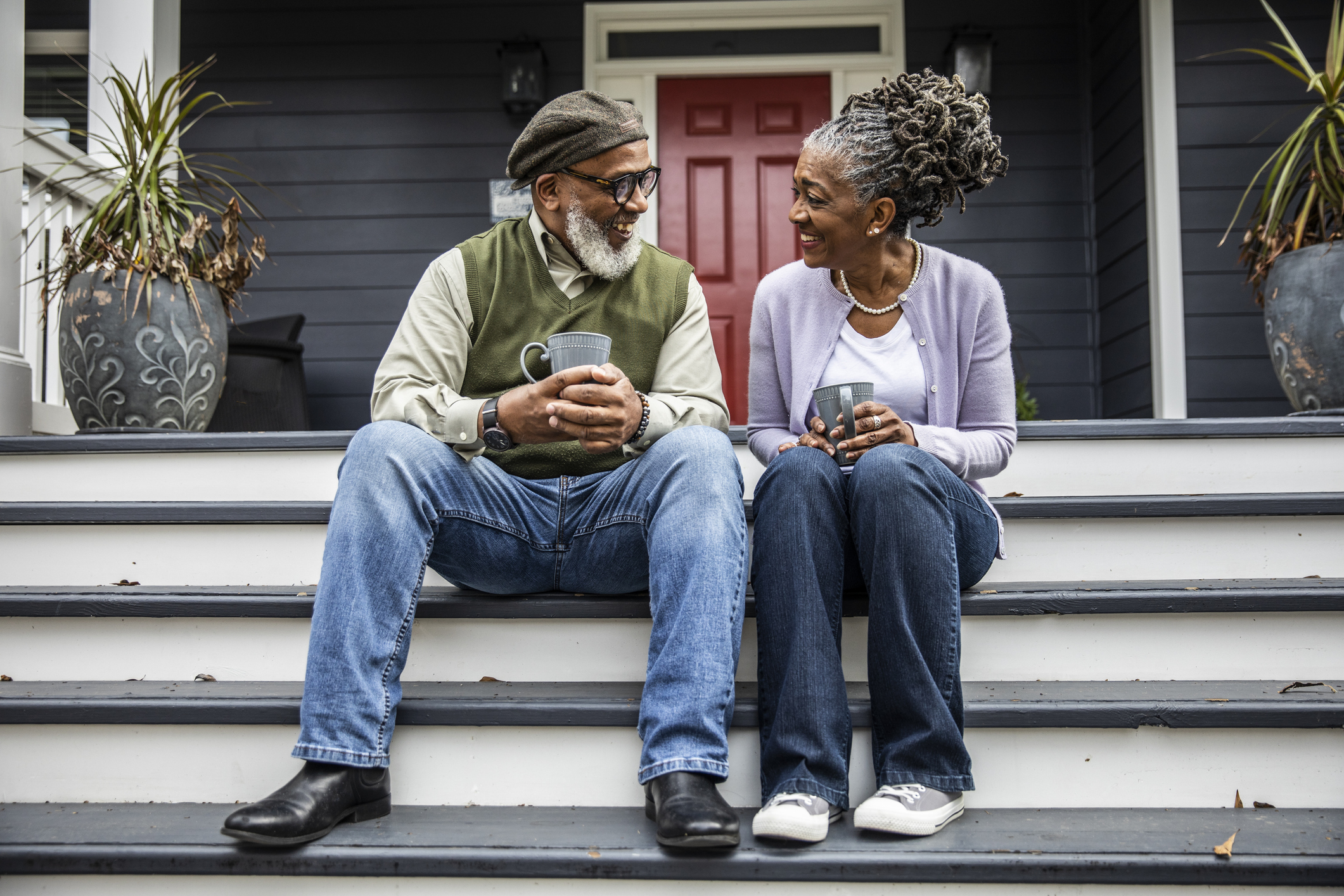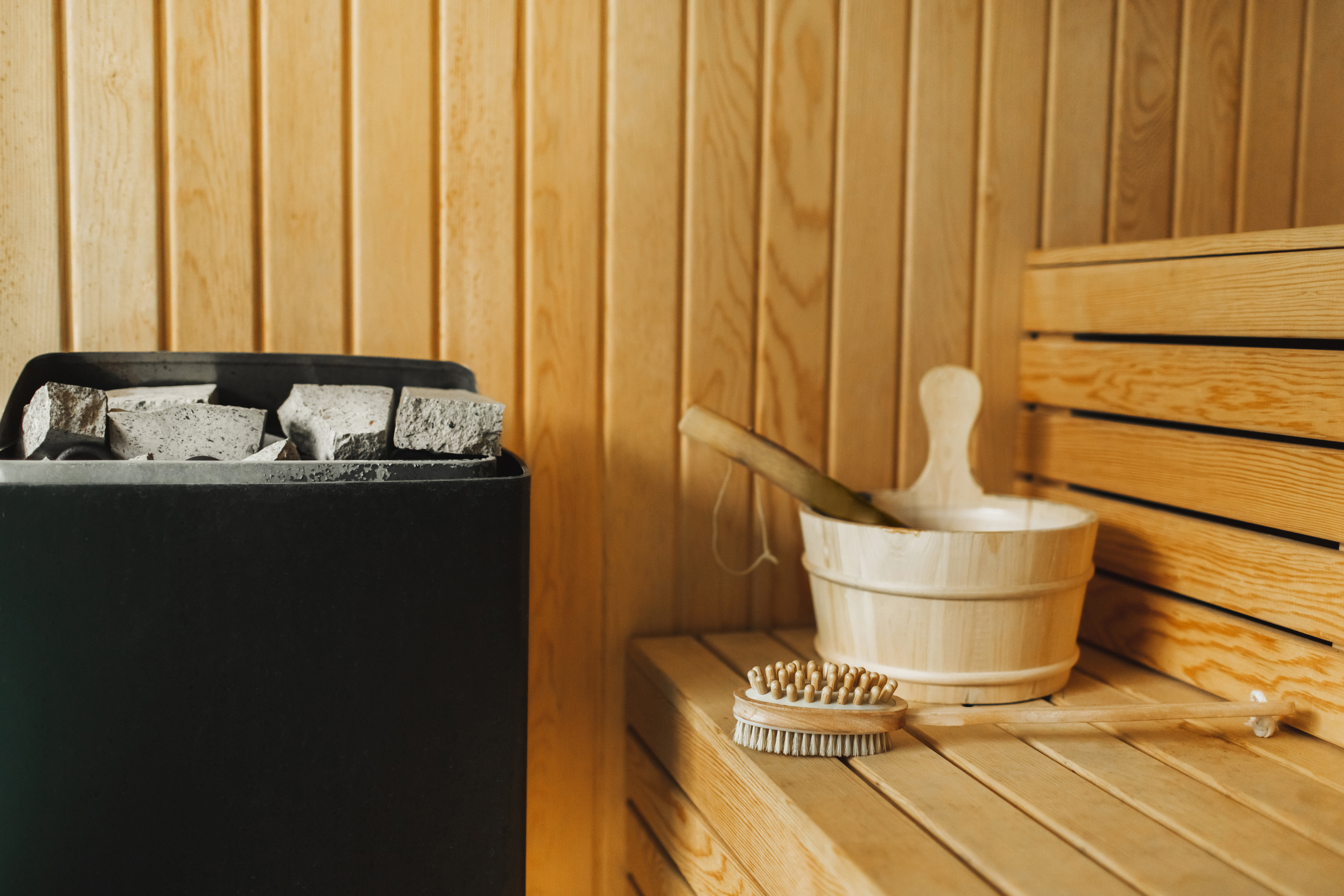7 Ways to Splurge on Yourself, Because Your Kids Will Inherit Enough
Your kids will have plenty. Enjoy your money in your lifetime.

Charlotte Gorbold

- For the practical: The home upgrade you didn't know you needed
- For the nostalgic: Go see an old — or new — favorite
- For the grounded: Practice mindfulness and meditation
- For the java junkie: Barista-style coffee at home
- For the homebody: Enjoy your very own sauna
- For the active: Take your turn at-bat
- For all: Take care of your health
A family friend recently told me a funny story: Their wealth manager instructed them to spend frivolously.
"You have enough saved for your kids to inherit happily," the adviser said. "Start flying first class or your kids will when you're dead."
Like many before them, the couple had become retirement millionaires too scared to spend. After years of frugality and careful saving, it can be difficult to realize you actually can — and maybe should — enjoy the fruits of your labor.
"Having a lot of money that you are reluctant to spend isn't a bad thing in and of itself, but if it prevents you from enjoying your retirement, it can be," Kiplinger retirement writer Donna Fuscaldo has advised.
If you're in the enviable position of having money to spend but don't know how to, we've got some ideas for you, including minor and major splurges, depending on your appetite.
For the practical: The home upgrade you didn't know you needed

Ease into spending with a home upgrade you'll appreciate every day — and that will help your home appreciate in value.
When's the last time you thought about your front door? Chances are, it's been a while. If you've lived in your home for some time and plan to age in place there, it might be time for an update.
Replacing a front door was identified by Kiplinger as a home upgrade that pays off —not only by increasing the value of your home but by potentially saving you money in utility bills with better insulation. Plus, it's the first impression guests have of your abode — why not give it a refresh?
Minor splurge: Customizable fiberglass door from Home Depot, $748
Major splurge: Deco fiberglass door from Home Depot, $2,970
For the nostalgic: Go see an old — or new — favorite

Did you miss seeing Rush when you were younger because you couldn't get tickets? Were you out of town during their last tour? Well, Rush is back on tour in 2026, with stops all across the U.S. (and some in Canada and Mexico City). You can see tour dates here.
Were you really more of an '80s metalhead? Mötley Crüe and AC/DC are also hitting the road.
And there's something for everyone, really. Although Paul McCartney only has a few dates left on his performance calendar right now, Ringo Starr is making the rounds. Stevie Nicks has a few shows left, Heart is playing through the spring, and Journey will be circling the country in 2026. Plus, don't forget the music legends playing in Las Vegas.
If classic rock's not your style, there are plenty of other concerts to choose from in the pop realm, from Lady Gaga to Ariana Grande to Bad Bunny.
Minor splurge: Concert ticket prices vary, but the average price for the top touring artists last year was $136, per Pollstar
Major splurge: Take a page from the "Swifties" who caused localized inflation during the epic "Eras" tour and turn a concert night into a vacation. Check out the tour dates of your favorite artist and see if they're playing in a locale you've always wanted to visit. (Like, say, Bon Jovi in New York?)
You've got the time and money — go make a real trip out of it.
For the grounded: Practice mindfulness and meditation

We all know we should prioritize our own well-being so we can be there for others — or, put on our own oxygen mask first, to use a well-known analogy. But as any parent will tell you, that's not always possible. Whether you're taking care of a child, grandchild, parent or partner, you've got a lot on your plate.
Whenever time allows, practicing gratitude is a good way to start looking after our mental health. As Kiplinger writer Jacob Schroeder explains, studies have shown that people who count their blessings may have a more positive outlook on life. This can be as simple as taking five minutes a day to jot down grateful feelings in a journal, or using an app that teaches basic mindfulness techniques.
From there, the sky's the limit in terms of where your wellness journey can take you. According to the Global Wellness Institute, the U.S. is the largest wellness economy by far — there are more than 28,000 spas across the country, and luxury wellness resorts offering retreats are easier to find than ever.
Minor splurge: To learn more about the science behind gratitude and be taken through the practice step by step, try the Kurzgesagt Gratitude Journal ($29.90 plus shipping). A year’s subscription to Calm, one of the leading apps for relaxation, costs $79.99 and gives you access to stress relief programs and guided content from clinical experts and meditation teachers, as well as hundreds of sleep stories, sounds and music.
Major splurge: The Mindful Journey experience at Canyon Ranch resort in Lenox, Massachusetts, starts at $1,250 per person, per night, on an all-inclusive basis, for a five-night stay. The program includes wellness sessions designed to look after your happiness, healing and mental wellbeing.
For the java junkie: Barista-style coffee at home

Who doesn't need a jolt of caffeine to start the day? And who hasn't cringed at handing over hard-earned cash for overpriced and, let's admit it, ultimately disappointing coffee at a trendy coffee shop? It almost makes you long for the days of instant — only that's about to get more expensive too, as inflation and tariffs affecting coffee growers start to bite.
Yes, these are first-world problems. And there's a first-world solution, too, for starting your day with the coffee you dream about — the delicious kind you get on vacation but can never quite find back home.
Enter the espresso machine. Armed with a few reviews from a site you trust (Tom's Guide lists the best espresso machines, for example), you'll be able to find one that suits you, whether that's a manual model that allows you to play barista at home, or a fully automated one that does it all for you at the touch of a button.
Of course, the beans are just as important as the machine itself. Next time you have a really great coffee, ask the barista for the name of their supplier and track them down online — they might offer a subscription service.
Overall, this may be no cheaper than getting your coffee to go — but at least you won't have to stand in line (or move to Italy) to get a decent caffeine fix.
Minor splurge: Online reviewers say very good things about the Breville Bambino Plus Espresso Machine, currently $469.99 at Walmart. It takes up little space on your counter, but you will need a separate bean grinder.
Major splurge: Who wouldn't want the gorgeous Linea Mini from iconic brand La Marzocca in their kitchen? It’s pricey (from $6,600), so you should plan to put some serious effort into learning how to use it properly.
And where better to do that than the coffee capital of America? A three-hour class on espresso extraction and milk steaming fundamentals at the Seattle Barista Academy costs $195 per person.
For the homebody: Enjoy your very own sauna

There are some things Nordic countries do better than anyone — and you're bound to have at least one of them in your home already: Ikea furniture, Legos tucked away in a closet, some Gravlax in the refrigerator. Certainly an ABBA album tucked away somewhere, if you're of a certain vintage.
But how about making room for a sauna? Depending on where you live in the U.S., it may sound crazy to sit in a small, enclosed space that pumps out heat when you’re used to sitting in an air-conditioned home.
However, the dry heat created in a sauna is said to promote calm, relieve stress and relax tight muscles, and there's evidence to suggest it may also relieve minor pain and improve cardiovascular health. (Always consult a health care professional about using saunas, though, especially if you have any chronic health conditions.)
While you could easily use the sauna at the gym, there's something infinitely more appealing about having a private one that you don't have to share. And if you're in any doubt about the benefits of sauna culture, take a look at Sweden's entry into this year's Eurovision song contest — “Bara Bada Bastu,” which translates roughly as “just take a sauna.”
Minor splurge: If you want to try whole-body heat therapy but have limited space, the HeatPod Sauna Blanket 2 could be the answer. This infrared sauna blanket costs $599, although when we checked, there were some special offers on the website, including for Black Friday.
It's certainly cheaper than installing a sauna — you simply plug it in, select your setting and get in — and it packs away into a storage bag.
Major splurge: The sleek-looking Sun Home Equinox™ 2-Person Full-Spectrum Infrared Sauna was on sale for $6,699 when we looked at prices. Check the electrical requirements before buying — any electrical work you'll need to have done before installation must be performed by a qualified and licensed electrician.
For the active: Take your turn at-bat

How many parents invest time and money in sports lessons for their kids but would never consider stepping off the sidelines and on to the field themselves — even if they were keen players in their youth?
From a health perspective, it makes total sense to get back into the game as an adult — you'll be improving muscle strength, lowering the risk of disease and improving cardiovascular fitness. And while group activities will help you meet people and make new friends, which in turn can boost your mental health, even participating in solitary mode (at the driving range, for example) can improve your wellbeing.
And don't forget cognitive fitness — revisiting a foreign language, picking up an old musical instrument, or learning a completely new skill from scratch will keep your mind sharp and may help reduce the risk of dementia.
Minor splurge: Search online for local YMCAs that offer sports and recreation programs. Use Forte to find a music tutor who can offer online lessons (expect to pay between $60-$100 per hour for a professional teacher).
Or, try BBC Maestro for expert-led courses that fuel your creativity — you can learn how to write crime novels from none other than Agatha Christie, for example ($89 for one course or $120 per year for access to all courses).
Major splurge: Did you know Major League Baseball teams offer "fantasy camps," where adults can spend a week during the offseason training and playing like a professional?
All experience levels are encouraged, including no experience, and former players often are part of the camps. Men, women and children can don the pinstripes with the Yankees' fantasy camps, with prices starting at about $2,700.
For all: Take care of your health

Finally, there's one vital (albeit perhaps less enjoyable) activity that we should definitely not scrimp on as we age: Taking care of our bodies. And no matter how privileged we are, we all need a reminder of the risks we face and the warning signs to look out for.
Even if you don't have a history of cancer in the family, for example, you should be taking a proactive approach to checking for changes in your body. Some checks (skin self exams, breast self exams and testicular self exams) should be carried out regularly at home.
You can find a free skin cancer check near you on the American Academy of Dermatology Association website, and the American Cancer Society lists cancer screening test recommendations by age. If you're worried, explore options with your physician sooner rather than later.
Minor splurge: Take advantage of what your insurance covers. Most cover preventative care, including annual check-ups and vaccinations. If you're on Medicare, it offers 14 services for free that fit the bill, including screenings and nutrition services.
Major splurge: If you have the means, you could consider concierge medicine, a model where you essentially pay for access to doctors and health care. Prices vary wildly, from a few thousand dollars a year and sky-high of that.
Options include MDVIP, where you pay an annual fee of around $2,000 for 24/7 physician access, health screenings and longer appointment times.
You could also see the experts with the Mayo Clinic Executive Health Program, which offers a comprehensive health evaluation done over one to three days at campuses in Phoenix, Jacksonville and Rochester, Minnesota, as well as in London. Costs vary depending on your evaluation specifications, but it's typically a few thousand dollars. While you can request an appointment yourself, if you're still employed, you could see if your company would join the program with a corporate enrollment.
Related Content
Profit and prosper with the best of Kiplinger's advice on investing, taxes, retirement, personal finance and much more. Delivered daily. Enter your email in the box and click Sign Me Up.

Alexandra Svokos is the digital managing editor of Kiplinger. She holds an MBA from NYU Stern in finance and management and a BA in economics and creative writing from Columbia University. Alexandra has over a decade of experience in journalism and previously served as the senior editor of digital for ABC News, where she directed daily news coverage across topics through major events of the early 2020s for the network's website, including stock market trends, the remote and return-to-work revolutions, and the national economy. Before that, she pioneered politics and election coverage for Elite Daily and went on to serve as the senior news editor for that group.
Alexandra was recognized with an "Up & Comer" award at the 2018 Folio: Top Women in Media awards, and she was asked twice by the Nieman Journalism Lab to contribute to their annual journalism predictions feature. She has also been asked to speak on panels and give presentations on the future of media and on business and media, including by the Center for Communication and Twipe.
- Charlotte GorboldKiplinger Contributor
-
 Should You Renew Your CD?
Should You Renew Your CD?With rate cuts impacting earnings, we examine if now is a wise time to renew CDs.
-
 7 Ways to Plan Now to Save on Medicare IRMAA Surcharges Later
7 Ways to Plan Now to Save on Medicare IRMAA Surcharges LaterUnderstand the critical two-year lookback period and why aggressive planning before you enroll in Medicare is the most effective way to minimize IRMAA.
-
 Law Reversal Looming? Trump Eyes 2026 Gambling Winnings Tax Change
Law Reversal Looming? Trump Eyes 2026 Gambling Winnings Tax ChangeTax Deductions It's no secret that the IRS is coming after your gambling winnings in 2026. But how long will that last?
-
 Should You Renew Your CD?
Should You Renew Your CD?With rate cuts impacting earnings, we examine if now is a wise time to renew CDs.
-
 Where to Store Your Cash in 2026
Where to Store Your Cash in 2026Set yourself up for success with these strategies.
-
 I'm a Financial Adviser: The Fed's Rate Cuts Could Have Impacts You Might Not Anticipate
I'm a Financial Adviser: The Fed's Rate Cuts Could Have Impacts You Might Not AnticipateUnderstanding how lower interest rates could impact your wallet can help you determine the right financial moves to make.
-
 My Teen Crashed His Car, and Now Our Insurance Has Tripled. What Now?
My Teen Crashed His Car, and Now Our Insurance Has Tripled. What Now?Dealing with the costly aftermath of a teen car accident is stressful. Here are your options for navigating it.
-
 My First $1 Million: Retired In-House Corporate Lawyer, 74, Midwest
My First $1 Million: Retired In-House Corporate Lawyer, 74, MidwestEver wonder how someone who's made a million dollars or more did it? Kiplinger's My First $1 Million series uncovers the answers.
-
 I'm an Insurance Pro: Going Without Life Insurance Is Like Driving Without a Seat Belt Because You Don't Plan to Crash
I'm an Insurance Pro: Going Without Life Insurance Is Like Driving Without a Seat Belt Because You Don't Plan to CrashLife insurance is that boring-but-crucial thing you really need to get now so that your family doesn't have to launch a GoFundMe when you're gone.
-
 The Top 22 Gifts for Grandkids from Walmart in 2025
The Top 22 Gifts for Grandkids from Walmart in 2025From PlayStation to Labubu, you'll find the hottest gifts of 2025 for your grandkids at Walmart this year. Some of them are up to 78% off.
-
 CD vs. Money Market: Where to Put Your Year-End Bonus Now
CD vs. Money Market: Where to Put Your Year-End Bonus NowFalling interest rates have savers wondering where to park cash. Here's how much $10,000 earns in today's best CDs versus leading money market accounts.